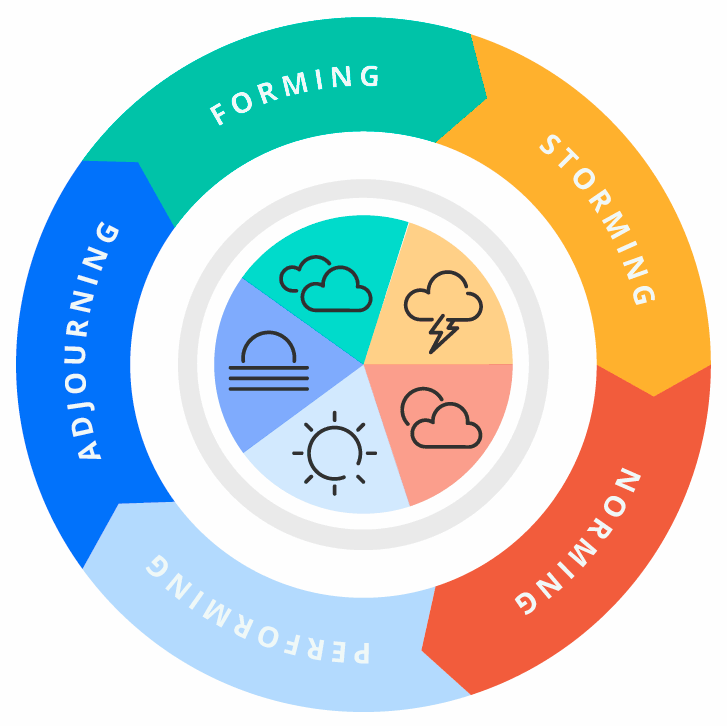Retirement, holiday pay, maternity/paternity pay (sometimes exceeding the statutory limit as part of a comprehensive benefits package), and sick pay are all mandatory employees benefits in the UK. Life insurance, income protection (long-term disability) GIP, critical illness insurance, private medical insurance, dental insurance, the health cash plan, employee assistance programs and virtual GP services, and employer-sponsored retirement all are illustrations of supplemental employee benefits in the United Kingdom. Company cars, season-ticket loans, childcare vouchers, biking to work, gyms, and office canteens are just a few of the advantages available to employees.
In the United Kingdom, employees are required to get certain benefits.
Pension
In the United Kingdom, pensions are a legally required benefit. Companies must follow the law and automatically enroll eligible employees in a pension plan. Employers are required to offer a minimum level of pension provision for their workers under pension auto-enrolment. The minimum acceptable contribution rate for occupational pension plans is 8% of ‘qualified earnings’ (as defined in the legislation). The employer is required to pay at least 3% of this. Pensions, on the other hand, are viewed as a crucial benefit in the United Kingdom, with many employers contributing far more than the legal minimum. Employees can contribute more, however, in the United Kingdom, there are annual maximum allowances to consider.
When constructing a pension program in the United Kingdom, five primary considerations must be made:
- Contributions: at what level will you be competitive and attract the best talent?
- Salary Exchange (also known as Salary Sacrifice) is the most tax-efficient technique for deducting contributions since it provides maximum tax and national insurance relief to both the employee and the employer.
- Carrier selection entails deciding on the best supplier based on the delivery of the proposition, terms, employee engagement support, and financial soundness.
- Default fund: For enrolment, the pension provider will offer a specified default fund that follows rigorous governance guidelines. Some companies, on the other hand, may opt to choose an alternate default fund for enrolling, depending on their own concerns and criteria in terms of performance, environmental impact, and other factors.
- Employee assistance: how is the scheme communicated to employees, and what kind of specialized help are they given?
Healthcare
This includes the following:
- seeking medical advice, diagnosis, or treatment from a doctor
- If you are ill or injured, you should seek treatment in a hospital.
- If you have significant or life-threatening injuries or health concerns, you should seek emergency attention from healthcare professionals working in ambulance services. This may include being transferred to the hospital.
The NHS is ‘publicly funded,’ with the majority of the funds coming from taxation paid by UK residents. Given the present strains on the NHS and longer wait times, a rising number of businesses are contemplating private healthcare options to ensure that their employees have quick access to health quality treatment when they most need it.
Holiday Pay
All employees who work a 5-day week are allowed the full 28 days of paid yearly leave every year. This equates to 2 weeks of vacation time (known as statutory leave entitlement or annual leave). Holidays are included in an employer’s statutory annual vacation.
Employers in the United Kingdom often grant more paid vacations than the required requirement. Furthermore, as part of a comprehensive benefits agreement, many businesses will provide employees with the option of boosting their holiday entitlement by ‘purchasing’ extra days.
Sick Leave Pay
Employers are required by law to provide a minimum level of Statutory Sick Pay; however, most employers choose to supplement this minimal benefit by providing contractual sick pay benefits. A popular strategy is to pay the full payment for a short period of time (e.g., 2–4 weeks) and subsequently lower compensation. Some companies are quite generous, while others do not offer any additional sick pay.
Insurance for Serious Illness (CIC)
When a specific condition, such as cancer, heart attack, or stroke, is diagnosed, this type of insurance pays out a lump sum payment. Typically, policies cover up to 30 or 40 conditions. Usually, the perk is provided as a voluntarily sponsored benefit by employees. Employer-funded CIC is offered by some companies to their most senior workers.
Medical Insurance Provided by a Private Company (PMI)
Smaller schemes may have a restriction on covering pre-existing ailments with this insurance. In general, insurers will quote for a minimum of 20 employees on a Medical History Disregarded (MHD) basis. However, plans can be set up on this basis for as few as one employee. Benefit-in-kind tax (P11D) applies when benefits are paid out to employees and most corporate plans are completely insured. Furthermore, a growing number of Trusts for companies with more than 1,000 employees, as well as hybrid Trusts, are in place.
Dental Insurance
In the United Kingdom, these regulations are quite simple to implement, with two employees serving as the bare requirement. Policies can be set up on a company-paid or employee-paid basis, with monthly premiums ranging from £10 to £50 per member depending on the type of coverage needed.
FAQ Section: UK Employee Benefits
Are pensions mandatory for employees in the UK, and what are the contribution requirements?
Yes, pensions are a mandatory benefit for eligible employees in the United Kingdom under the auto-enrolment pension law. Employers must automatically enroll all eligible employees into a qualifying workplace pension scheme and make contributions on their behalf.
The minimum total contribution required under the law is 8% of qualifying earnings. Out of this, the employer must contribute at least 3%, and the employee covers the remaining 5% (which may be partially offset by tax relief from the government).
However, many employers choose to exceed the minimum contribution as part of a competitive benefits package to attract and retain top talent. Some offer contributions up to 10–15%, especially in more competitive industries.
Employers can also offer pensions through Salary Exchange (Salary Sacrifice), a tax-efficient method where employees agree to reduce their gross salary in exchange for increased employer pension contributions. This benefits both the employer (through reduced National Insurance contributions) and the employee (through tax and NIC savings).
It’s important for companies to not only meet statutory requirements but also carefully consider their pension carrier, default fund options, and employee support programs to ensure good financial outcomes for their staff.
What types of healthcare benefits do UK employers offer beyond the NHS?
While the NHS provides universal healthcare for UK residents, many employers offer supplemental private healthcare benefits to help employees access faster and more flexible care, particularly given growing NHS wait times.
Common healthcare benefits provided by employers include:
-
Private Medical Insurance (PMI): Covers consultations, diagnostics, surgery, and sometimes mental health support. It can be company-paid or offered on a voluntary basis.
-
Virtual GP Services: Employees can consult with a doctor online or by phone, often 24/7.
-
Dental Insurance: Covers routine check-ups, dental treatments, and emergencies.
-
Health Cash Plans: Refunds costs on everyday healthcare such as eye tests, prescriptions, physiotherapy, and dental treatments.
-
Employee Assistance Programmes (EAPs): Provide access to confidential counselling, legal advice, and wellbeing resources.
These benefits not only support employee health but also contribute to reduced absenteeism, improved productivity, and employee satisfaction.
How much holiday are employees legally entitled to in the UK, and can employers offer more?
Employees in the UK are legally entitled to 28 days of paid annual leave per year if they work a standard 5-day week. This includes the 8 statutory bank holidays (although employers are not obligated to give bank holidays as paid leave unless stated in the contract).
However, many companies choose to offer enhanced annual leave as a perk, either by:
-
Offering more than the legal minimum (e.g., 30–35 days total leave)
-
Allowing employees to “buy” or “sell” holiday days as part of a flexible benefits scheme
-
Giving extra time off for long service milestones or birthdays
Generous holiday policies are viewed as a valuable non-monetary benefit and are a key part of work-life balance and employee wellbeing strategies in the UK workplace.
What is Statutory Sick Pay (SSP), and how do employers supplement it?
Statutory Sick Pay (SSP) is the minimum amount employers must pay to employees who are too ill to work. As of 2025, SSP is paid at £116.75 per week (subject to annual review) and is payable for up to 28 weeks after the first 3 “waiting” days of absence.
However, SSP is often seen as insufficient, and many employers offer contractual (enhanced) sick pay schemes that go beyond this minimum. Common models include:
-
Full pay for the first 2–4 weeks of illness
-
Tiered systems where pay gradually reduces over time
-
Unlimited sick leave (in rare cases)
Offering enhanced sick pay demonstrates a company’s commitment to employee welfare and helps reduce presenteeism (when sick employees come to work due to financial pressure).
Employers should clearly communicate their sick leave policies, including procedures for notification, documentation, and return-to-work support.
Conclusion
Understanding the landscape of employee benefits in the United Kingdom is essential for both employers looking to attract and retain top talent and employees seeking to make informed decisions about their compensation packages. While certain benefits like pensions, holiday pay, maternity/paternity leave, and sick pay are legally mandated, many organisations go above and beyond these minimum requirements to offer a comprehensive and competitive suite of benefits.
Supplemental benefits such as private medical insurance, dental coverage, critical illness insurance, and employee assistance programmes not only help meet employees’ diverse needs but also demonstrate a company’s commitment to their health, wellbeing, and financial security. Flexible perks like holiday buying schemes, company cars, and cycle-to-work programmes further enhance the employee experience.











